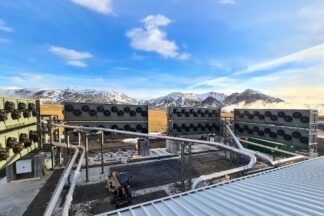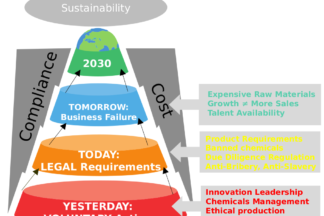Ever since my first steps in the world of ‘making sustainability happen’, one of the questions I most frequently get to hear is: ‘how is this relevant to [insert your preferred corporate or private authority person].
It is a valid question. But not an easy one to answer. And certainly not new.
It is a questions has been tackled in 3 ways:
Well illustrated and visually attractive presentations; Gamification approaches; and resources that help take relatively easy and simple steps that, cumulatively, make a difference.
Here hence a list of tools and approaches that intent to motivate, create urgency, and inspire action.
Large companies and institutional players are challenged to assess and calculate their carbon footprint. But they typically have the means to hire experts – in-house or consultants – and buy licenses of useful tools.This applies similarly to larger-sized SMEs. But what about distinctly small companies or indeed even individuals? How can they get a guesstimate on their carbon footprint, and possibly even some pointers how to do better going forward? Hence, here a short list of such calculators, both for individuals as well as for small companies.
Pricing the ton of carbon is a key matter – more so as an increasing number of companies aim at publicly claiming carbon neutrality. Carbon hence has a price – and this raises the much discussed question: What is a fair (or better: ‘correct’) price for carbon?
In this post I present a glimpse of some of the challenges and realities related to the topic.
It leaves us with the question: What went wrong in the current system that fundamentally asks us to choose between having to monetarily price natural and societal resources, and a fair, equitable access to these resources specifically for hard hit communities?
The question alone should not be even asked.
And yet it seems that’s what we’re left with given the current time and age.
As companies and countries around the world pursue net zero targets, one big question is: How do you ensure the carbon removal technologies we will need 20 to 30 years down the road are available, affordable and easily scaled?
S&P Global recently published a podcast mini-series on emerging climate technology.
The series not only introduces a range of much hyped about, CO2 saving or CO2 removing technology, but also looks at scaling, the truth of potential impact, and financial viability.It is for this reason that I would like to list the three episodes in this post – and invite everyone to spend the 3 x 20 minutes to wrap their head around these insights.
Right now everyone, everything seems to talk about wanting to be come ‘carbon neutral’.
Don’t get me wrong: The goal itself – getting to a net zero carbon balance at the very least, and all that on nothing longer than a 2040 trajectory – is a must for every business.
But.
After Circularity and Regenerative, we’re seemingly right onto the next term in the game of buzzword bingo: Net Zero.
Net Zero should be every where indeed.
But not as a mere wave to ride in order to catch the next press release headline.
How do you make ‘sustainability' tangible?
The usual answer is – unsurprisingly – a ‘well, it depends’.
Which it evidently does.
Unfortunately, good case studies are extremely rare to come across.
Hence, when I stumbled across such a gem in one of the primary Swiss news papers, I jumped at the opportunity to summarise it for this blog.
Carbon – together with biodiversity – is one of THE most critical dimensions among the Planetary Boundaries. Because the already existing overshoot is putting our civilisation at risk. So far nothing new under the sun. The food and agri sector is - possibly together with the energy sector - one of the most important industries in this regard. Not only does it impact our living environment significantly - by how our food is grown - but also they play a key role to feed our global population. The big elephant in the room is of course: How well or badly do agri food companies perform right now in terms of their carbon footprint? And: Do they have at the least commitments to work on a Paris Agreement trajectory? I look into these questions. Spoiler Alert: There is not much to cheer about. Not at all.
Reducing humanity’s footprint on this planet is a journey of decisions.
Some of them tough, some of them very clear. And some of them – let’s just say: with very limited available data.
The journey we’re on, is the proverbial Designer’s Paradox. More scientifically speaking of course, we are faced with the ever lasting conundrum of Regrettable Substitutions.
So: Is there a best possible AND least bad option (combined) at this very moment?
It is quite astonishing: all the different contexts that the term ‘circularity’ or ‘circular economy’ is being used. They key point mostly is of course the waste reduction promises inherent in the term, and the subsequent lower dependency on finite resources.
But, in addition to reducing waste, carbon – or rather carbon footprint – is a key factor.
Unfortunately, the reality is sobering: taking fashion as example, at best between 3% and 6% of the industry's carbon footprint could be remedied that way.
And even worse: in order to realise the potential, three fundamental hurdles must be addressed. Some efforts are underway, of course, but a steep hill remains to climb.
In last week’s post I looked at energy companies and their trajectory relative to the Paris Climate Agenda. The insights clearly suggested a mixed picture. A clear point of how important it is to decarbonised the way we fuel our economy and global society.
But that’s unfortunately not all there is to the energy generation picture!
What few people realise: Energy generation requires water. A lot of water.
Not just in the energy generating processes, but also in the extraction of the energy source (coal in particular), and/or the making of the necessary equipment.
Some insights ... illustrated at the example of China.
Carbon – together with biodiversity – is one of THE most critical dimensions among the Planetary Boundaries. Because the already existing overshoot is putting our civilisation at risk. So far nothing new under the sun.
The energy sector is the by far most impactful sector: directly and indirectly our carbon footprint depends on how they fuel our civilisation.
The big elephant in the room is of course: How well are badly do energy companies perform right now in terms of their carbon footprint? And: Do they have at the least commitments to work on a Paris Agreement trajectory? I look into these questions. Spoiler Alert: The results are pretty much in line with expectations. Yet: among the innovators, not everyone does perform as well as they probably should ...
Recently we have learned how the Board of Directors of the 20 largests banks (under)performs when it comes to ESG, and the consequences this has on their future fit investments.
This raises evidently the question: How do these 20 banks perform right now in terms of their carbon footprint? And: Do they have at the least commitments to work on a Paris Agreement trajectory? I answer these questions.
Afterall: Carbon – together with biodiversity – is one of THE most critical dimensions among the Planetary Boundaries. Because the already existing overshoot is putting our civilisation at risk. So far nothing new under the sun. Spoiler Alert: The results are pretty much in line with expectations. ESG-experience on the BoD does make a difference.
Carbon – together with biodiversity – is one of THE most critical dimensions among the Planetary Boundaries. Because the already existing overshoot is putting our civilisation at risk. So far nothing new under the sun. The big elephant in the room is of course: How do companies perform right now in terms of their carbon footprint? And: Do they have at the least commitments to work on a Paris Agreement trajectory? I answer these questions. Spoiler Alert: Some 'villains' are doing rather well. So well in fact that they are leading the pack.
Khadi is an Indian fabric par excellence. Hand-made from start to finish it has for centuries been the livelihood of rural communities. But the industry is in decline. Interview with Shailini Seth-Amin, CEO of MoralFibres, a company set to re-invent Khadi.










